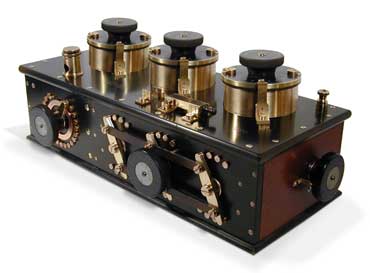| Contact |
| Back | Home |
The
Marconi Multiple Tuner
1907 - 1912
|
Prior to the introduction of the Multiple Tuner by the Marconi Wireless Company, receivers had only limited tuning ability which left them with no effective way of discriminating between the signals of multiple simultaneous transmitters. Marconi was well aware of this limitation which was brought painfully home to him in 1903 during a demonstration of his wireless apparatus by Dr. J. Ambrose Fleming1. According to the story, Fleming was about to demonstrate the system when the Morse printer began chattering rapidly with the words: "There was a young man from Italy, who diddled the public so prettily..." The source of this embarrassment to Fleming and Marconi was a business rival who had set up his own transmitter as an attempt to discredit Marconi. While the incident was certainly embarrassing, it did provide Marconi with an excruciatingly clear message: For wireless to be of commercial value, the ability to distinguish between multiple transmitters was a must. |
|
|
Click here to see a photo of this piece before restoration. |
Marconi assigned the problem to one of his top engineers, C.S. Franklin. Franklin's solution, for which Marconi obtained a patent in 1907, is a remarkable work of engineering and innovation. The set is a major milestone in radio development and introduced several new technologies, including:
|
|
The Multiple Tuner consists of a set of three LC circuits each made up of a variable condenser and a variocoupler (see the diagram below). By selecting the appropriate combination of taps on the aerial tuning inductance, variable condensers and the variocouplers, the operator could tune over a range of 80 to 2600 meters. |
|
|
Multiple Tuner Schematic Diagram
|
|
|
1Early Radio by Peter R. Jensen, Kangaroo Press, 1994 |
|
| Contact |
| Back | Home |
